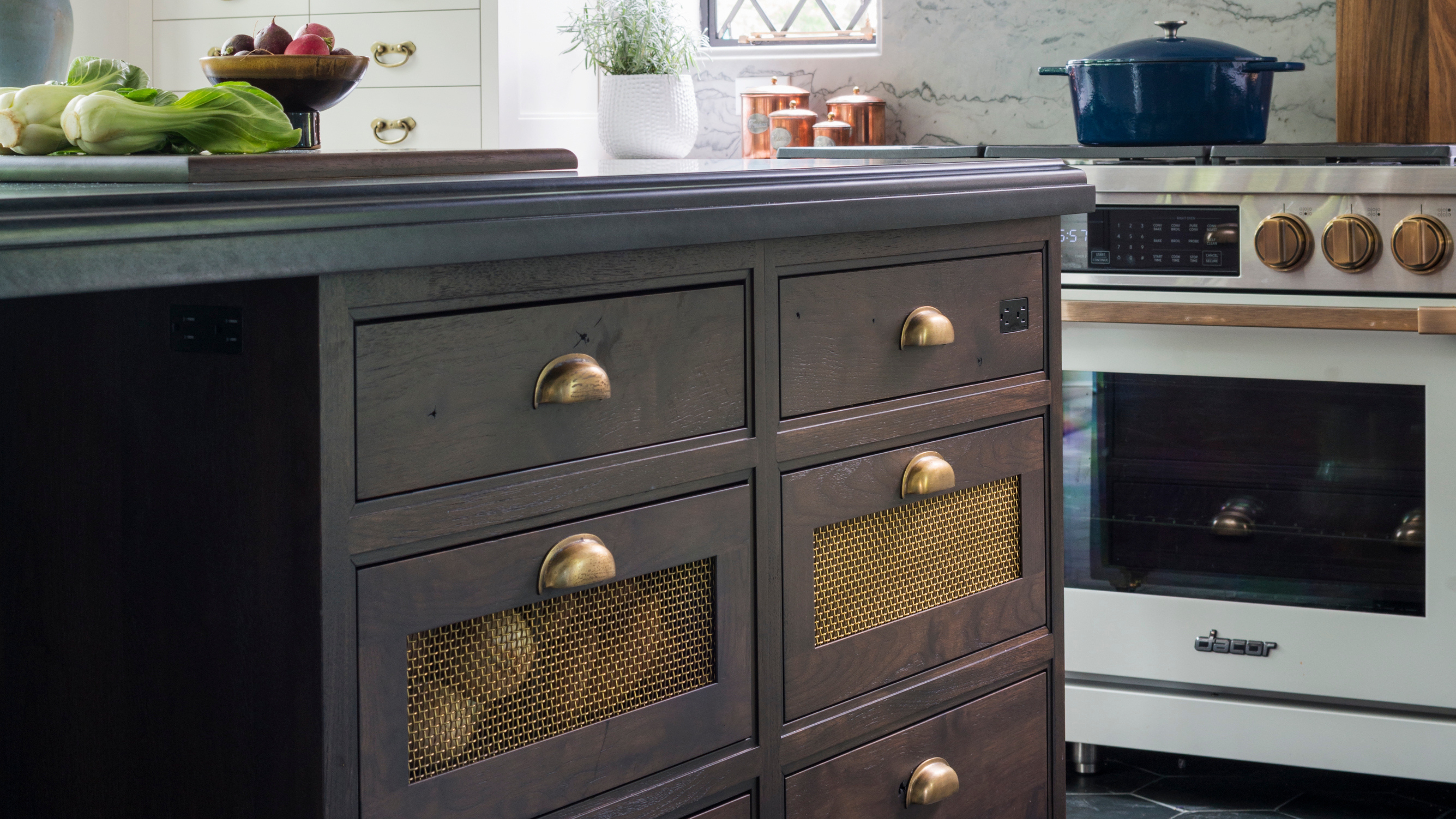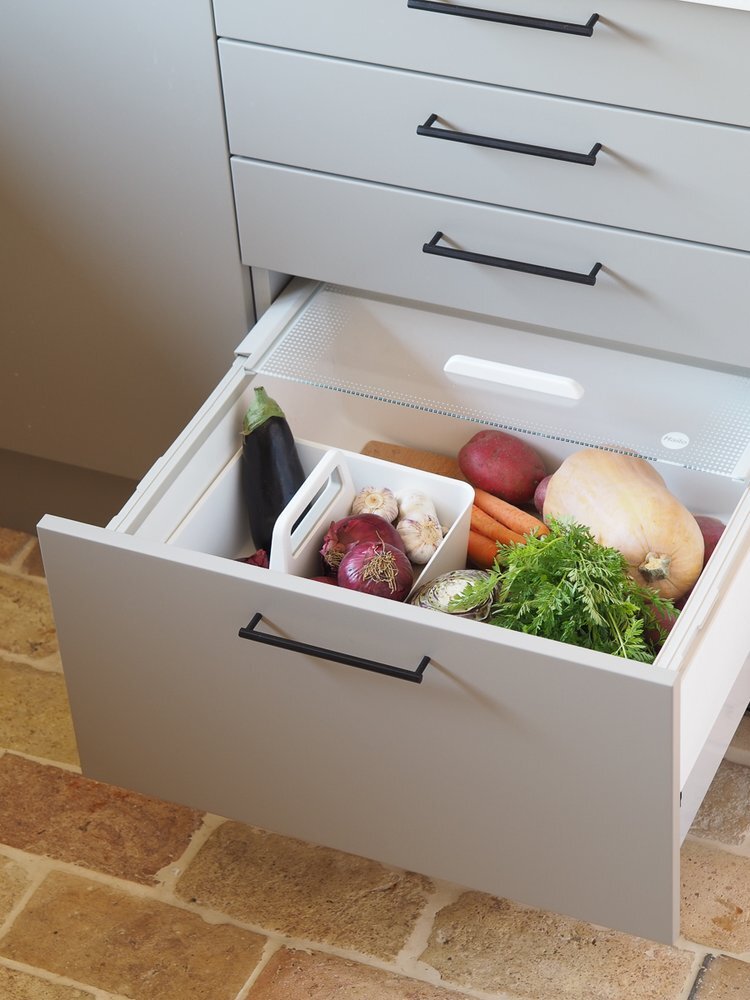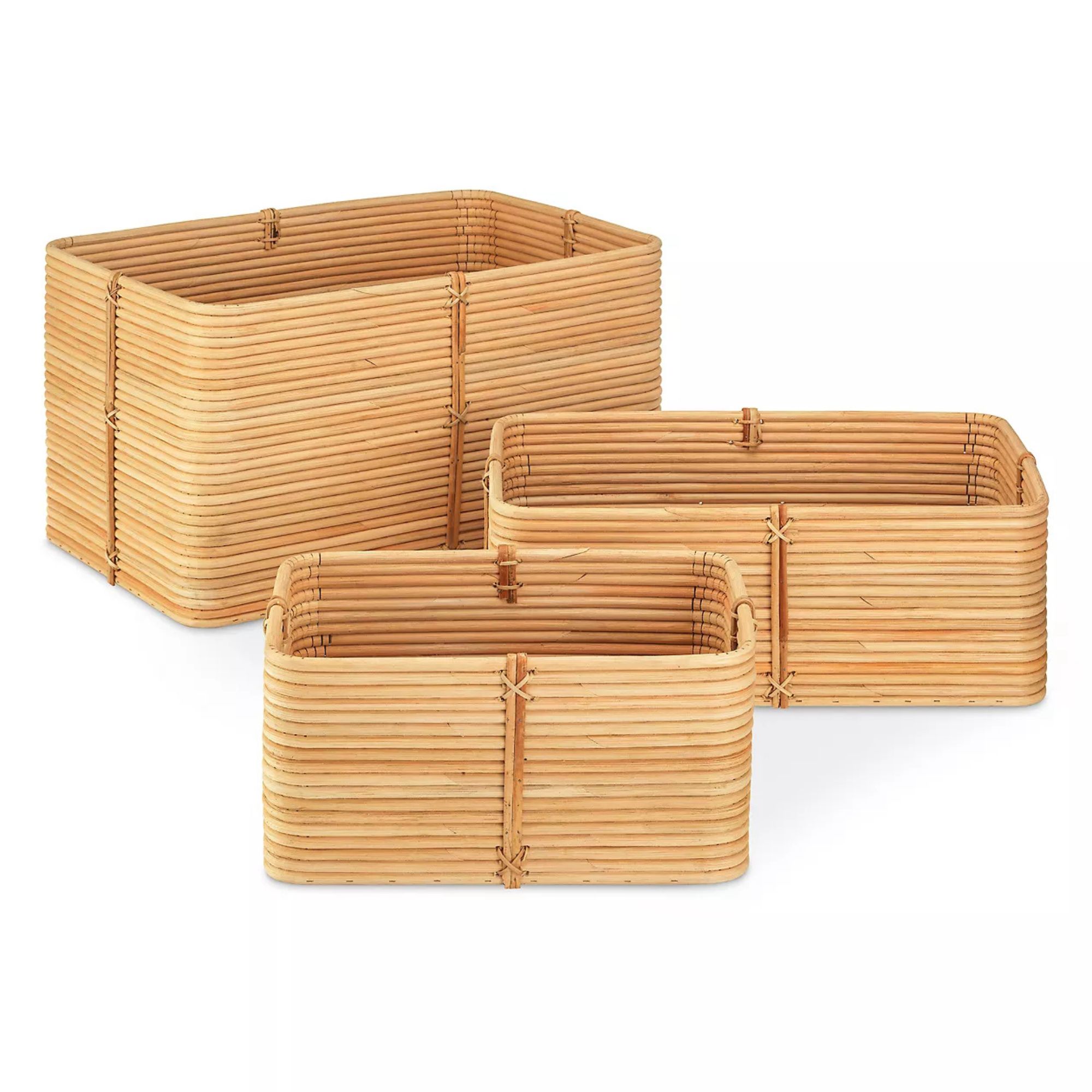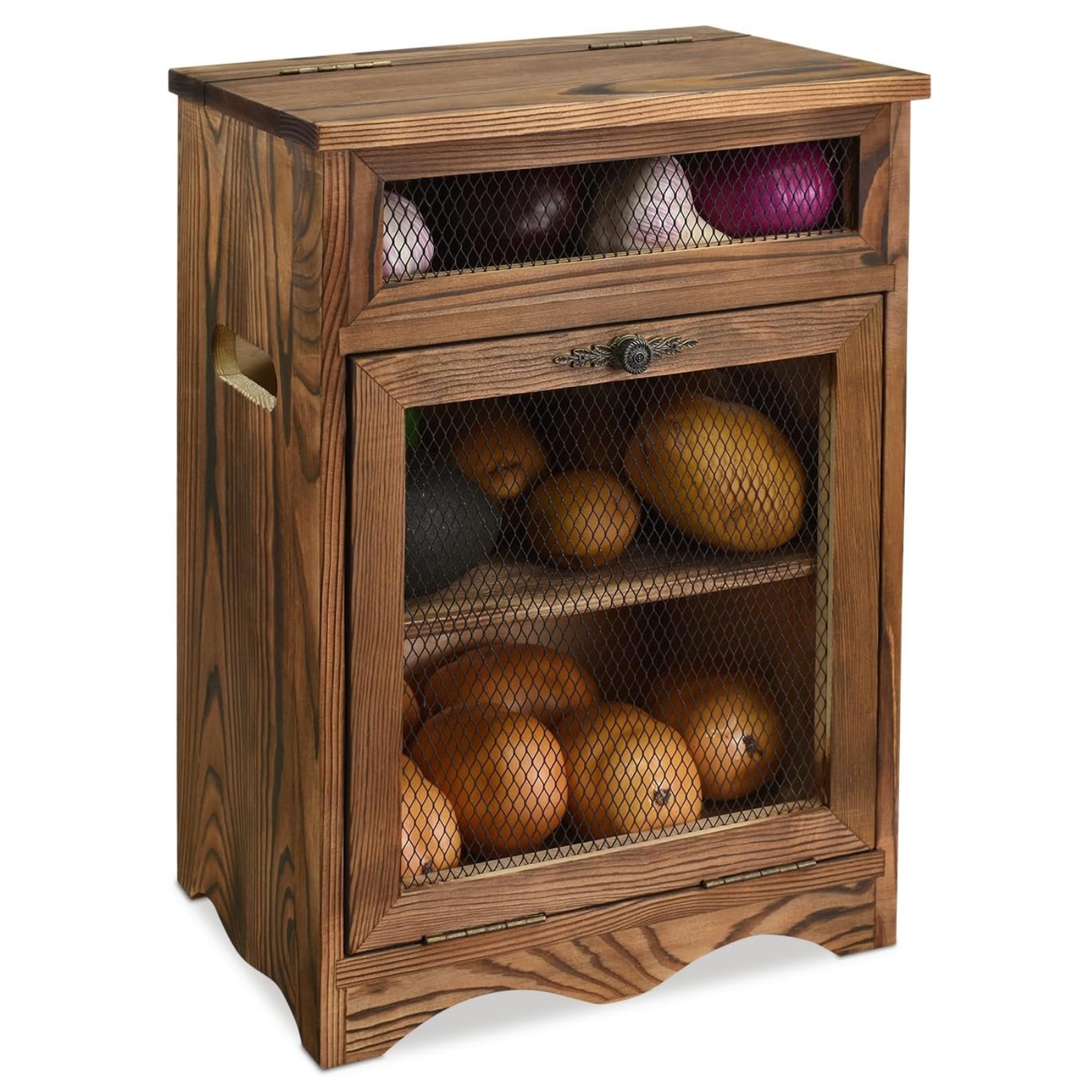Kitchen Produce Drawers Are the Clever Way to Keep Your Veggies Crisp and Countertops Clear These Holidays — Here's Why
Whether it's custom fit or simply repurposing a standard drawer, it's time to neatly tuck away your harvest ahead of the holiday season


From now through December, the kitchen is working overtime. From hosting fall get-togethers to cooking dinners for the extended family, your kitchen is at the heart of it all. With all of the hosting responsibilities comes the inevitable buildup of groceries. A cute statement bowl on the countertop can only hold so many seasonal veggies before it starts to overflow. So it's time to consider a more clever way to pack away your produce.
Produce drawers are not a kitchen storage idea I have seen around too much, but I'm hoping to change that. Storage space is at a premium in most kitchens, so the secret to a well-organized cooking space where your countertops are clutter-free is to find storage ideas that marry style and practicality. Produce drawers are like a beacon of light in the long (but fun) night of holiday hosting and tidying.
Interior designer Sarah Robertson, founder of Studio Dearborn, agrees, adding that "The need for room temperature storage for produce that does not do well in the refrigerator is a common need amongst homeowners." My over-crowded countertop bowl would agree. So a stylish solution like this is exactly the kind of interior design trend that catches my attention. Have I caught yours?
What is the Purpose of a Kitchen Produce Drawer?

Interior designer Sarah Robertson is a kitchen storage aficionado, and it was while perusing her stunning kitchen designs that I first discovered the hidden produce drawer. When I asked her about it, she explained that the holidays (when hosting is at an all-time high) falls at the tail end of harvest season, meaning "people find themselves using a lot of potatoes, onion, apples, yams, and other root vegetables for their holiday cooking."
But this produce is not typically the kind you want to keep in the fridge. When too cold, potato starches start to turn to sugars, causing them to sweeten. Onions and garlic can also soften and spoil faster in the fridge. So dry, room-temperature produce drawers act as a clever pantry idea for storing this kind of produce, especially for those who many not have the luxury of a dedicated pantry closet.
Not to mention, produce drawers also help maximize your kitchen counter organization and visual appeal. Di Ter Avest, professional home and lifestyle organizer and owner of Di is Organized, adds that "By keeping produce off the counter, you free the kitchen from visual clutter, offering more workspace and a clean, organized look."
So, separating and dry storing this kind of produce not only reduces the risk of damage or early spoilage, but also brings a sense of ease and convenience to your kitchen.
The Livingetc newsletters are your inside source for what’s shaping interiors now - and what’s next. Discover trend forecasts, smart style ideas, and curated shopping inspiration that brings design to life. Subscribe today and stay ahead of the curve.
A post shared by Sarah Robertson (@studiodearborn)
A photo posted by on
Produce Storage Ideas to Get the Look
How to Include a Produce Drawer in Your Kitchen

To keep your kitchen produce drawer design looking good, you'll want to take into account what is practical for the size of your kitchen and the amount of food you will need to store (keeping in mind this will likely increase over the holidays).
Sarah recommends keeping your produce drawers on the smaller side. "Our first few deigns were four times bigger than the client needed, and resulted in a lot of wasted space," she admits. "Dedicating a number of small drawers to produce, or dividing a larger drawer can help keep them organized and separated if necessary."
There are also a few design elements to keep in mind in order to keep your produce fresher for longer. "When using produce drawers, it's crucial to be mindful of the specific needs of different types of produce," says Di. "Some fruits, like apples and bananas, release ethylene gas, which can speed up the ripening process of nearby vegetables. Keeping such items in separate drawers can prevent spoilage. Also, keep an eye on your produce, especially during warmer months, to avoid fruit flies."

While Sarah's drawers feature a mesh insert on the front and base of the drawer, to help maintain airflow around the produce too. If custom cabinetry like this is out of the question, Livingetc's editor Hugh Metcalf (who I just discovered has his own kitchen produce drawer at home, shown above) says repurposing a standard drawer is also possible.
"This was an add-on from my kitchen designer that converts a standard drawer into one for storing any fresh produce that doesn't need to be store in the refrigerator," he explains. "It consists on a slotted wooden insert that sits on the bottom of the drawer to allow keep airflow underneath your produce, while also protecting the drawer if things spoil, as well as a sliding glass top that keeps things a little more airtight in the hopes of prolonging their freshness."
Another alternative could be to replace a drawer or shelf with one of these sliding cabinet drawer organizers from QVC ($119).
Kitchen produce drawers can be incorporated into custom cabinetry, created by repurposing standard drawers, or even free-standing storage solutions you can buy.
No matter which route you take, your harvested fruits and veggies will thank you for giving them the thoughtful attention they deserve this hosting season.

Olivia Wolfe is a Design Writer at Livingetc. She recently graduated from University of the Arts London, London College of Communication with a Masters Degree in Arts and Lifestyle Journalism. In her previous experience, she has worked with multiple multimedia publications in both London and the United States covering a range of culture-related topics, with an expertise in art and design. At the weekends she can be found working on her oil paintings, reading, or antique shopping at one of London's many vintage markets.


